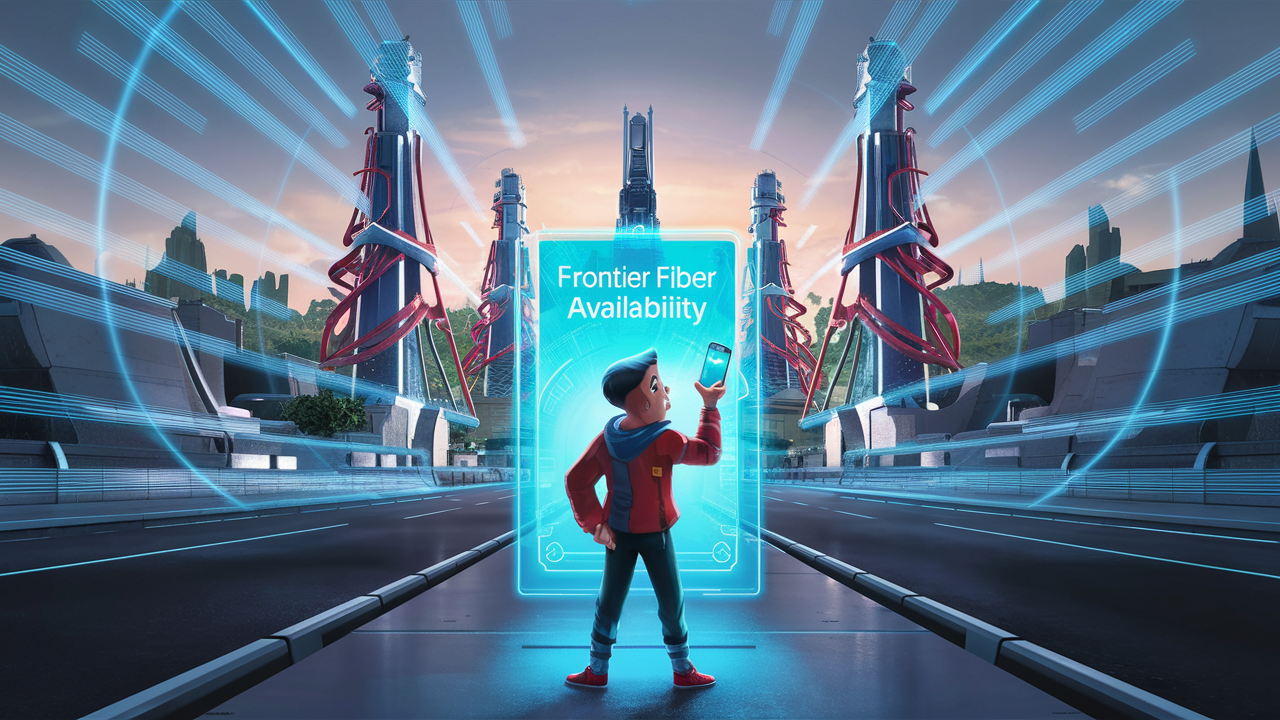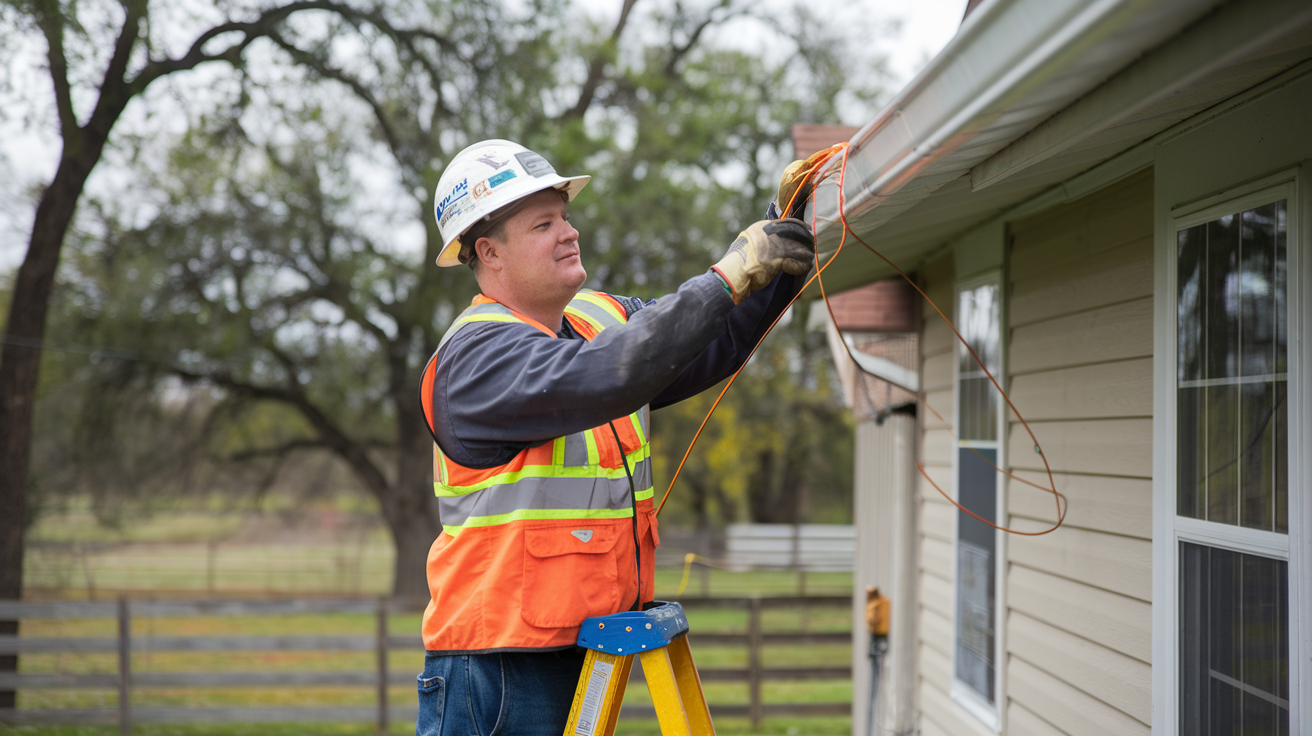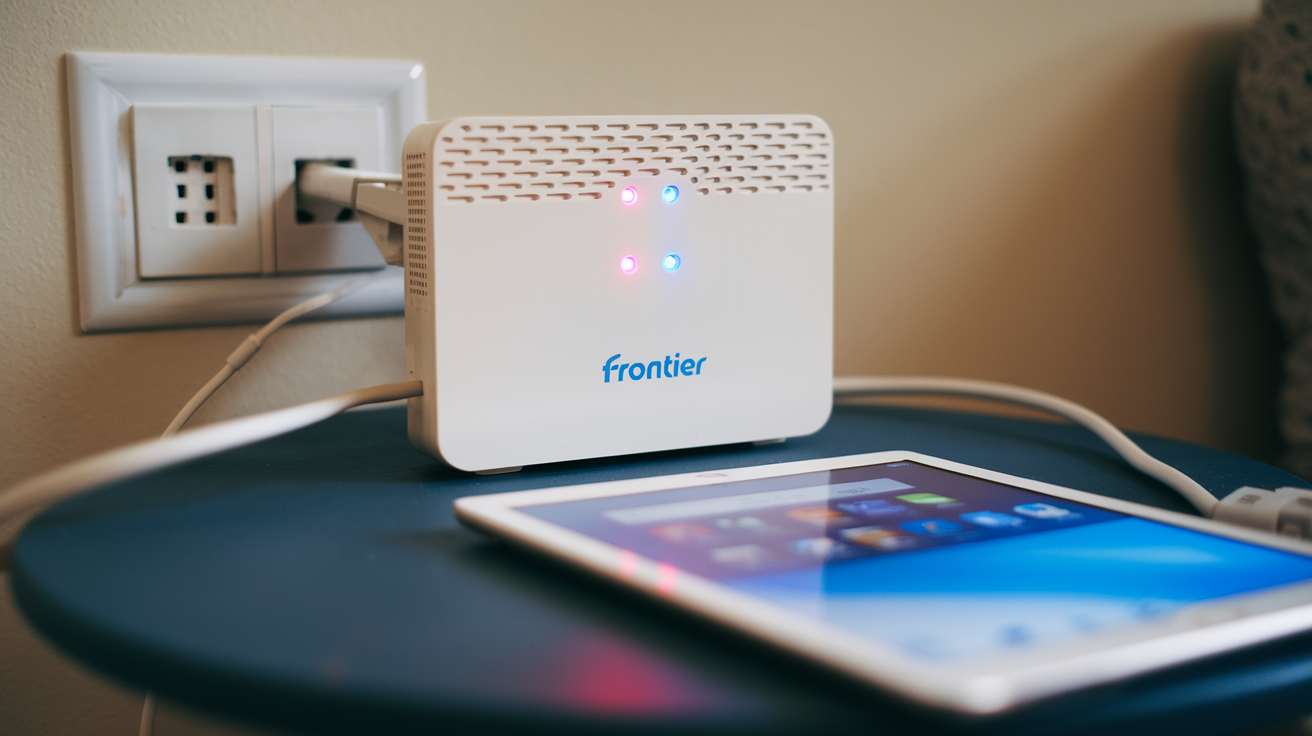
Discover if blazing-fast Frontier Fiber internet is within your reach. This comprehensive guide provides the essential steps and insights to determine Frontier Fiber availability in your specific location, empowering you to make an informed decision for your home or business connectivity needs.
How to Check Frontier Fiber Availability in Your Area
The most direct and accurate way to determine if Frontier Fiber is available at your specific address is by using Frontier's official online tools. This process is designed to be straightforward and provides immediate results. Many users search for "Frontier Fiber availability map" or "check Frontier internet service," and while general maps can offer a broad overview, an address-specific check is crucial for definitive answers.
Step-by-Step Guide to Checking Availability
Follow these simple steps to confirm Frontier Fiber service at your location:
- Visit the Official Frontier Website: Navigate to the official Frontier Communications website. Look for sections labeled "Internet," "Fiber," "Check Availability," or similar.
- Enter Your Address: You will typically find a prominent search bar or a dedicated form asking for your street address, city, state, and ZIP code. Be precise with your input to ensure the most accurate results.
- Submit Your Information: Click the "Check Availability," "Find Plans," or similar button.
- Review the Results: The website will then process your request. If Frontier Fiber is available, you'll be presented with available plans, speeds, and pricing. If it's not available, the site will usually inform you and may offer alternative Frontier services if they exist in your area (like DSL).
Using the Frontier App
In addition to the website, Frontier often provides a mobile application. Downloading and using the Frontier app can offer a similar, convenient way to check for service availability directly from your smartphone or tablet. The process within the app mirrors the website's address verification method.
Contacting Frontier Directly
If you encounter any issues with the online tools or prefer speaking with a representative, you can always call Frontier Communications customer service. They have access to the most up-to-date information regarding network expansion and serviceability at specific addresses. Be prepared to provide your full address when you call.
Key Tip: Always use the official Frontier website or app for the most reliable availability information. Third-party sites may not have real-time data.
Understanding Frontier Fiber: What It Is and Why It Matters
Frontier Communications is a telecommunications company that offers a range of internet services, including Digital Subscriber Line (DSL) and, increasingly, Fiber-to-the-Home (FTTH) internet. The focus of this guide is on their fiber optic offerings, which represent the cutting edge of internet technology.
What is Fiber Optic Internet?
Fiber optic internet uses thin strands of glass or plastic to transmit data as pulses of light. Unlike traditional copper-based DSL or cable internet, which transmit data as electrical signals, fiber optics offer several significant advantages:
- Speed: Light travels incredibly fast, allowing fiber optic connections to achieve symmetrical download and upload speeds that are orders of magnitude faster than traditional technologies.
- Reliability: Fiber optic cables are less susceptible to electromagnetic interference, weather conditions, and signal degradation over long distances compared to copper wires.
- Bandwidth: Fiber can carry a much larger volume of data simultaneously, making it ideal for households with multiple devices and high-bandwidth activities like streaming 4K video, online gaming, and large file transfers.
- Low Latency: The time it takes for data to travel from your device to the internet and back (latency) is significantly lower with fiber, crucial for real-time applications such as video conferencing and online gaming.
Frontier's Commitment to Fiber Expansion
Frontier Communications has been actively investing in and expanding its fiber optic network across various regions in the United States. Their strategy involves upgrading existing infrastructure and building new fiber lines to bring high-speed internet to more homes and businesses. This expansion is driven by the growing demand for faster, more reliable internet services needed to support modern digital lifestyles.
As of 2025, Frontier continues to prioritize fiber deployment, aiming to reach underserved and even previously unserved areas. This commitment means that even if fiber isn't available at your address today, it might be in the near future. Staying informed about their expansion plans is key.
Where is Frontier Fiber Currently Available?
Frontier's fiber optic network is not available nationwide. Its presence is concentrated in specific states and regions where Frontier has invested in building out its fiber infrastructure. The company primarily operates in areas that were historically served by Verizon's former landline operations, which Frontier acquired in certain territories. This includes states like California, Texas, Florida, and parts of the Northeast.
Key States with Frontier Fiber Presence (as of 2025)
While Frontier's network is dynamic and expanding, here are some of the key states where you are more likely to find Frontier Fiber availability. It is crucial to check your specific address as availability can vary even within these states.
- California: Frontier has a significant fiber footprint in many California communities, offering high-speed internet to a substantial portion of its customer base in the state.
- Texas: Similar to California, Texas is a major market for Frontier Fiber, with ongoing expansion efforts in various urban and suburban areas.
- Florida: Frontier has been actively deploying fiber in Florida, bringing advanced internet services to numerous cities and towns across the state.
- Connecticut: Frontier is a prominent provider in Connecticut, and its fiber network continues to grow here.
- New York: While DSL is widespread, Frontier is also bringing fiber optic services to select areas in New York.
- Other States: Frontier may also offer fiber services in parts of Indiana, Oregon, Washington, and other states where it has established a presence.
Geographic Concentration and Expansion
Frontier's fiber deployment often follows its existing copper network footprint. This allows them to leverage existing rights-of-way and infrastructure to some extent, accelerating the rollout process. However, building new fiber lines is a complex and costly undertaking, which is why availability is not uniform.
The company's strategic focus for 2025 and beyond is heavily weighted towards fiber expansion. They are investing billions of dollars to upgrade their network to fiber-to-the-premises (FTTP) architecture, aiming to cover millions of new locations with gigabit-speed internet. This means that areas currently served only by DSL might see fiber become available in the coming months and years.
Important Note: The information on specific states is a general guideline. The only definitive way to know if Frontier Fiber is available at your address is to use their online availability checker or contact them directly.
Factors Influencing Frontier Fiber Availability
Several key factors determine whether Frontier Fiber optic internet is available at a particular address. Understanding these can help you gauge the likelihood of future availability and appreciate the complexities of network deployment.
1. Existing Infrastructure
Frontier's fiber expansion often builds upon its existing network. Areas where Frontier already has a strong presence with DSL or other services are more likely to be prioritized for fiber upgrades. This is because the company has established relationships with local authorities, rights-of-way, and a customer base in these locations.
2. Local Regulations and Permitting
Deploying fiber optic cables, especially underground, requires extensive permitting and approvals from local municipalities, counties, and sometimes state governments. The process can be lengthy and complex, involving negotiations over trenching, pole attachments, and environmental impact studies. Areas with streamlined regulatory environments may see faster deployment.
3. Geographic Location and Density
Urban and suburban areas with higher population density are generally more attractive for fiber deployment from a business perspective. A higher concentration of potential customers in a smaller geographic area can make the substantial investment in fiber infrastructure more economically viable for the provider. Rural or sparsely populated areas can be more challenging and expensive to serve with fiber.
4. Competition
The competitive landscape in an area can also influence a provider's deployment strategy. If other companies are already offering high-speed fiber services, Frontier might be motivated to deploy its own fiber to capture market share. Conversely, in areas with limited competition, the urgency to deploy fiber might be less.
5. Investment and Funding
Fiber optic network build-out is a capital-intensive endeavor. Frontier's ability to expand its fiber footprint is directly tied to its financial resources, investment strategies, and any government grants or subsidies it may secure to support broadband expansion in underserved areas.
6. Network Design and Engineering
The technical feasibility and cost of extending the fiber network to a specific location play a significant role. Factors like the distance from the nearest fiber hub, the terrain, and the need for new conduit or aerial cable installations all contribute to the complexity and cost of bringing fiber to a particular address.
Future Expansion Potential
Frontier's stated goal is to significantly expand its fiber footprint by 2025 and beyond. They are actively working to overcome many of these challenges. If your area is not currently served, it's worth checking periodically for updates on their expansion plans. You can often find information about upcoming projects on their website or through local news outlets covering broadband initiatives.
Example Scenario: A densely populated suburban neighborhood that is currently served by Frontier DSL but lacks fiber from competitors might be a prime candidate for Frontier's next wave of fiber deployment, assuming regulatory hurdles are manageable and the cost per home passed is favorable.
Frontier Fiber Plans and Pricing (2025 Update)
Frontier offers a variety of fiber internet plans designed to meet different user needs, from casual browsing to heavy-duty streaming and gaming. Pricing and plan details can vary by location and are subject to change. The following is a general overview based on typical offerings as of early 2025. Always verify current pricing and plan specifics for your exact address on the Frontier website.
Typical Frontier Fiber Speed Tiers
Frontier's fiber plans are often characterized by their symmetrical speeds, meaning the download and upload speeds are the same. This is a significant advantage over many cable or DSL plans.
1. Basic Fiber Speed (e.g., 500 Mbps Symmetric)
- Ideal for: Small to medium-sized households, moderate internet users.
- Use Cases: Streaming HD video, web browsing, social media, video calls for a few users, online gaming with moderate demands.
- Estimated Price Range (2025): $50 - $70 per month (often with introductory offers).
2. High-Speed Fiber (e.g., 1 Gig (1000 Mbps) Symmetric)
- Ideal for: Larger households, power users, heavy streamers, serious gamers.
- Use Cases: Streaming 4K/8K video on multiple devices simultaneously, seamless online gaming, large file downloads/uploads, supporting many connected smart home devices.
- Estimated Price Range (2025): $70 - $90 per month (often with introductory offers).
3. Ultra-High Speed Fiber (e.g., 2 Gig or 5 Gig Symmetric - Availability Varies)
- Ideal for: Households with extremely high internet demands, businesses operating from home, users who need the absolute fastest speeds for professional applications.
- Use Cases: Professional video editing and uploading, hosting servers, multiple users engaged in simultaneous high-bandwidth activities, future-proofing for emerging technologies.
- Estimated Price Range (2025): $100 - $150+ per month (availability is more limited).
Important Considerations for Pricing
- Promotional Pricing: Frontier, like most ISPs, offers attractive introductory rates for new customers. These prices are typically valid for a set period (e.g., 12 or 24 months) after which the price will increase to the standard rate.
- No Data Caps: Frontier Fiber plans typically come with unlimited data, meaning you won't be charged extra for exceeding a certain data usage threshold.
- Equipment Fees: While some providers charge monthly for modems/routers, Frontier often includes the necessary equipment (ONT - Optical Network Terminal) with their fiber installation. You may have the option to use your own compatible router.
- Installation Fees: Standard installation might be free or have a one-time fee. Check for any current promotions that waive installation costs.
- Contract Requirements: Many Frontier Fiber plans are offered on a month-to-month basis, providing flexibility. However, some promotions might require a contract.
- Taxes and Fees: The advertised price usually does not include federal, state, and local taxes, as well as regulatory fees, which will be added to your monthly bill.
2025 Market Trends
In 2025, the trend in fiber internet pricing continues to be competitive. Providers are striving to offer compelling value propositions to attract and retain customers. Symmetrical speeds are becoming the expected standard for fiber, and providers like Frontier are leveraging this to differentiate themselves from cable and DSL competitors. Expect to see more focus on multi-gigabit plans becoming accessible to a wider audience.
Recommendation: When checking availability, pay close attention to the "standard" or "regular" price after any promotional period ends. This will give you a realistic understanding of the long-term cost.
What to Do If Frontier Fiber Isn't Available in Your Area
It can be disappointing to learn that Frontier Fiber isn't yet available at your address, especially if you're eager to upgrade to high-speed internet. However, there are several proactive steps you can take to explore other options and stay informed about future developments.
1. Explore Other Internet Service Providers (ISPs)
Frontier is not the only provider of internet services. Depending on your location, you may have access to other technologies and providers:
- Other Fiber Providers: Many other companies are investing in fiber networks. Check availability with providers like AT&T Fiber, Verizon Fios (in specific regions), Google Fiber (in select cities), and local municipal broadband initiatives.
- Cable Internet: Companies like Spectrum, Xfinity (Comcast), and Cox offer high-speed internet over their cable networks. While often asymmetrical (faster download than upload), speeds can be very competitive, sometimes reaching gigabit download speeds.
- Fixed Wireless Internet: In some areas, especially rural ones, fixed wireless providers use antennas to beam internet from a tower to a receiver on your home. This can offer decent speeds where traditional wired options are scarce.
- Satellite Internet: Services like Starlink (SpaceX) and HughesNet offer internet access via satellite. Starlink, in particular, has been improving speeds and reducing latency, making it a viable option for some remote locations.
- Frontier's Other Services: If Frontier Fiber isn't available, check if Frontier offers DSL or other internet technologies in your area. While not as fast as fiber, modern DSL can still provide adequate speeds for basic internet needs.
Action: Use online comparison tools and visit the websites of major ISPs to check availability at your address for each provider.
2. Sign Up for Availability Notifications
Many ISPs, including Frontier, allow you to sign up for notifications about network expansion. If Frontier is planning to bring fiber to your neighborhood in the future, you can register your interest. This not only keeps you informed but also signals demand to the provider.
Action: Look for "Notify Me" or "Register Your Interest" options on Frontier's website or the websites of other fiber providers.
3. Advocate for Better Broadband
In some cases, community advocacy can play a role in bringing new broadband infrastructure to an area.:
- Contact Local Representatives: Inform your local city council members, county commissioners, or state representatives about the need for better internet service.
- Join Community Groups: Participate in local groups focused on improving infrastructure or advocating for digital equity.
- Support Municipal Broadband: If your municipality is considering building its own fiber network, lend your support.
4. Consider Future Moves
If reliable, high-speed internet is a critical requirement for your home or business, and your current location is severely underserved, you might need to consider relocating to an area where better options are available. This is a significant decision, but it's worth keeping in mind if connectivity is a primary driver.
5. Evaluate Your Current Needs
Before settling for an alternative, take stock of your actual internet usage. If you primarily browse the web, check email, and stream occasional standard-definition video, a less advanced service might suffice for now. However, if you rely on high-speed internet for work, education, or entertainment, it's worth pursuing the fastest available option.
Example: If Frontier Fiber isn't available, but Xfinity offers a 1.2 Gbps download / 35 Mbps upload cable plan, and your usage is heavily download-focused (streaming, gaming), this could be a strong alternative. However, if you frequently upload large files for work, you might find the asymmetrical speeds limiting.
The Unparalleled Benefits of Fiber Optic Internet
The surge in demand for fiber optic internet is not without reason. This advanced technology offers a transformative internet experience compared to older infrastructures like DSL and even cable. Understanding these benefits can solidify why checking for Frontier Fiber availability is so important.
1. Blazing-Fast and Consistent Speeds
The most significant advantage of fiber is its speed. Frontier Fiber plans often offer symmetrical speeds, meaning your upload speed is as fast as your download speed. This is crucial for activities like uploading large files, video conferencing, and live streaming. While cable internet might offer high download speeds, their upload speeds are typically much lower.
- Download Speeds: Easily reach 1 Gbps (1000 Mbps) and even 2 Gbps or 5 Gbps with higher-tier Frontier plans.
- Upload Speeds: Symmetrical speeds mean you get the same lightning-fast upload performance as download, essential for creators, remote workers, and gamers.
2. Superior Reliability and Stability
Fiber optic cables are made of glass or plastic and transmit data using light signals. This makes them inherently more robust than copper wires:
- Immunity to Interference: Unlike copper, fiber is not affected by electromagnetic interference (EMI) from appliances, power lines, or even lightning strikes, leading to fewer service disruptions.
- Durability: Fiber optic cables are less prone to corrosion and degradation from moisture, making them more reliable in various environmental conditions.
- Less Signal Degradation: Light signals can travel much longer distances over fiber without significant loss of strength, meaning your connection remains strong even if you're far from the network hub.
3. Low Latency for Real-Time Performance
Latency, or ping, is the time it takes for data to travel from your device to a server and back. Lower latency is critical for applications that require near-instantaneous responses:
- Online Gaming: Low latency is paramount for a smooth, lag-free gaming experience.
- Video Conferencing: Reduces delays in conversations, making virtual meetings feel more natural and productive.
- Real-time Trading: Essential for financial professionals who need to execute trades with minimal delay.
- Virtual Reality (VR) and Augmented Reality (AR): These immersive technologies demand very low latency to prevent motion sickness and ensure a seamless experience.
4. Increased Bandwidth for Multiple Devices
In today's connected homes, numerous devices are online simultaneously – smartphones, tablets, smart TVs, gaming consoles, smart home devices, and more. Fiber's high bandwidth capacity ensures that all these devices can operate without slowing down the network for others.
- Stream 4K/8K Video: Enjoy buffer-free, high-resolution streaming on multiple TVs at once.
- Simultaneous Downloads/Uploads: Multiple users can download large files or upload content without impacting each other's performance.
- Smart Home Integration: Supports a growing ecosystem of connected devices without compromising network speed.
5. Future-Proofing Your Connection
The internet is constantly evolving, with new applications and technologies emerging that require ever-increasing bandwidth and speed. Investing in fiber optic internet today means you're prepared for the demands of tomorrow. Frontier's fiber network is built to accommodate future speed upgrades without requiring extensive physical infrastructure changes.
Statistics Snapshot (2025):
| Technology | Typical Download Speed | Typical Upload Speed | Latency |
|---|---|---|---|
| Frontier Fiber | 1 Gbps+ (Symmetric) | 1 Gbps+ (Symmetric) | Very Low (e.g., 5-20ms) |
| Cable Internet | Up to 1 Gbps+ | 10-50 Mbps | Low (e.g., 10-30ms) |
| DSL Internet | 10-100 Mbps | 1-10 Mbps | Moderate (e.g., 30-70ms) |
The benefits of fiber are clear and compelling, making it the preferred choice for modern internet connectivity. If Frontier Fiber is available, it's often the best path forward.
Making the Switch to Frontier Fiber
Once you've confirmed Frontier Fiber availability at your address and selected a plan that suits your needs, the process of switching is generally straightforward. Frontier aims to make this transition as seamless as possible for new customers.
The Installation Process
The installation of fiber optic internet typically involves a technician visiting your home to connect the fiber line to your premises and set up the necessary equipment.
- Scheduling the Appointment: After signing up, you'll be prompted to schedule an installation appointment. Frontier offers various appointment windows, and you can often choose a date and time that works best for you.
- Technician Visit: On the scheduled day, a Frontier technician will arrive. They will need access to the outside of your home to connect the fiber line (often through a small drilled hole) and the inside of your home to install the Optical Network Terminal (ONT). The ONT is the device that converts the light signal into an electrical signal your devices can use.
- Equipment Setup: The technician will connect the ONT and, if necessary, a router provided by Frontier. They will ensure the connection is active and test the speeds to confirm they meet the plan's specifications.
- Guidance and Support: The technician can answer any questions you may have about your new service, including how to connect your devices and optimize your Wi-Fi network.
What to Expect During Installation
- Duration: A standard fiber installation typically takes between 2 to 4 hours, depending on the complexity of the setup.
- Home Access: Ensure clear pathways to where the fiber line will enter your home and where you plan to place your modem/router.
- Existing Service: If you are switching from another provider, it's advisable to keep your old service active until your Frontier Fiber service is fully installed and tested to avoid any interruption.
Canceling Your Old Service
Once you are satisfied with your new Frontier Fiber connection, you can proceed to cancel your service with your previous Internet Service Provider (ISP). Be sure to:
- Check for Early Termination Fees (ETFs): Review your old contract to see if any fees apply.
- Return Equipment: You will likely need to return any equipment (modem, router) leased from your old provider to avoid additional charges.
- Confirm Cancellation: Obtain confirmation of your cancellation from your old provider.
Tips for a Smooth Transition
- Be Present: It's highly recommended that you or an authorized adult be present for the entire installation process.
- Prepare Your Home: Clear any clutter around the installation area to give the technician easy access.
- Have Your Wi-Fi Network Name (SSID) and Password Ready: If you plan to use your own router or want to reconfigure your Wi-Fi settings, have this information handy.
- Test Your Speeds: After installation, use a reliable speed test tool on a wired connection to verify you're getting the speeds you're paying for.
Switching to Frontier Fiber is an investment in a superior internet experience. By following these steps and understanding the process, you can ensure a smooth transition to faster, more reliable connectivity.
In conclusion, determining Frontier Fiber availability is a critical first step toward upgrading your home internet. By utilizing Frontier's official online tools, understanding the factors influencing network expansion, and exploring all available options, you can make an informed decision. Frontier's commitment to fiber deployment in 2025 and beyond offers hope for many new areas. Should fiber not be an option, exploring alternatives like cable or fixed wireless ensures you can still find a suitable high-speed solution. The benefits of fiber – unparalleled speed, reliability, and low latency – are undeniable, making it the gold standard for modern internet connectivity. If Frontier Fiber is indeed available at your address, the switch promises a significantly enhanced online experience for all your digital needs.






